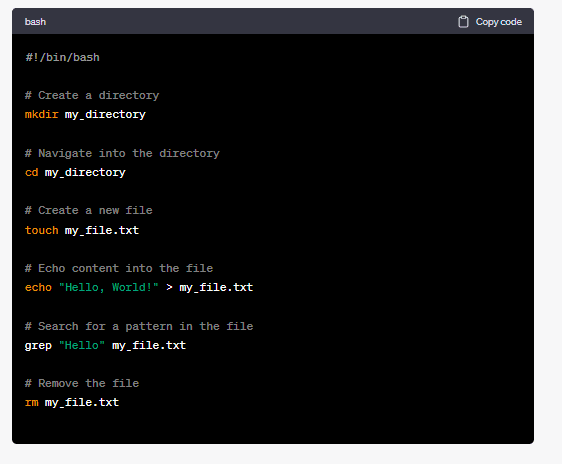
In the world of programming and automation, BASH shell scripting serves as a powerful tool. Understanding the fundamentals of BASH scripting allows you to automate tasks, perform complex operations, and streamline your workflow. In this article, we'll delve into the inner workings of the BASH shell, explore the basics of a kernel, and provide an example of a BASH script that showcases six essential commands. Additionally, we'll uncover the order of operations and the significance of variables in the sequence of operations.
The BASH Shell: A Gateway to Automation
The BASH shell, short for "Bourne Again SHell," is a command-line interface (CLI) that provides an interactive environment for executing commands and writing scripts. It is the default shell for most Unix-like operating systems, including Linux and macOS. BASH offers a wide range of features, including command line editing, job control, scripting capabilities, and more.
Understanding the Kernel:
The kernel acts as the bridge between the hardware and software layers of a computer system. It is the core component of the operating system that manages system resources, handles input/output operations, and provides essential services to running processes. When you execute a BASH command, it communicates with the kernel to carry out the requested operation, whether it is creating a file, executing a program, or manipulating data.
Basic BASH Scripting Example:
To demonstrate the power of BASH scripting, let's consider an example that showcases six fundamental commands: mkdir, cd, touch, echo, grep, and rm. The script creates a new directory, navigates into it, creates a file, echoes content into the file, searches for a specific pattern within the file, and finally removes the file. Here's the script:
bash
Copy code
!/bin/bash
Create a directory
mkdir my_directory
Navigate into the directory
cd my_directory
Create a new file
touch my_file.txt
Echo content into the file
echo "Hello, World!" > my_file.txt
Search for a pattern in the file
grep "Hello" my_file.txt
Remove the file
rm my_file.txt
Order of Operations and the Role of Variables:
When executing a BASH script, the operations are carried out in the order they appear within the script. In the example above, the script creates a directory, changes the directory, creates a file, echoes content into the file, searches for a pattern, and finally removes the file.
Variables play a crucial role in BASH scripting, allowing you to store and manipulate data dynamically. You can declare a variable by assigning a value to it, and then use the variable throughout the script as needed. For example, you can store a file path in a variable and reuse it for various operations within the script, promoting code reusability and maintainability.
Conclusion:
BASH shell scripting provides a flexible and efficient way to automate tasks and streamline workflows. By understanding the basics of BASH scripting, the role of the kernel, and the order of operations, you can harness the power of automation to enhance productivity and simplify complex tasks. Experiment with different commands, explore advanced scripting techniques, and unlock the full potential of BASH shell scripting. Happy scripting!
Note: Remember to make the script executable using the command chmod +x scriptname.sh before running it in your terminal.







Top comments (0)